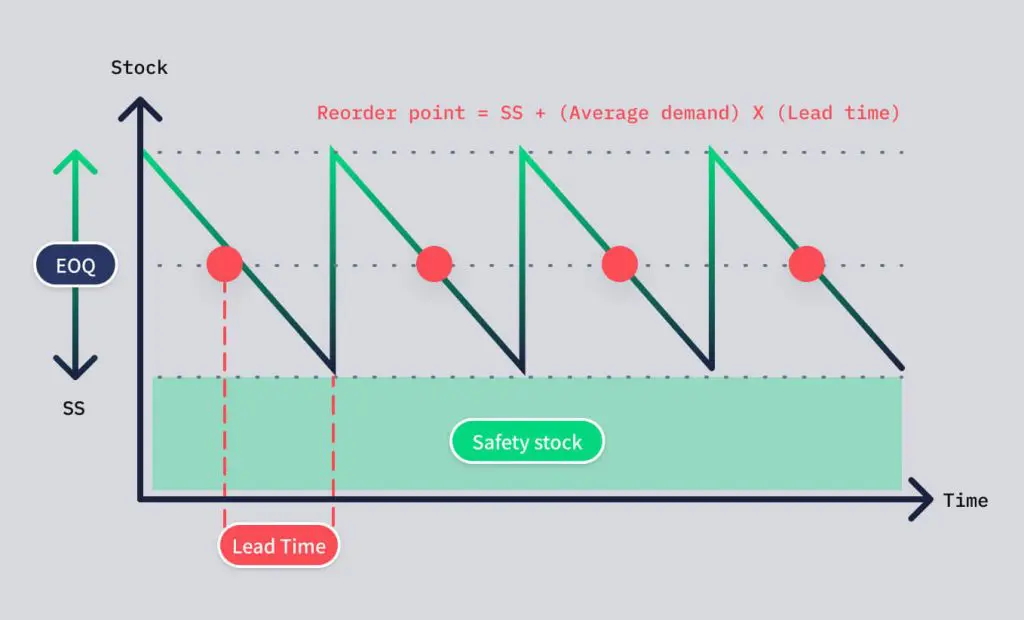Supply chain execution (SCE) is a critical aspect of modern business operations, ensuring the smooth flow of goods and information from suppliers to customers. In today’s fast-paced and highly competitive global marketplace, understanding and mastering SCE practices can give companies a significant competitive advantage. This article will provide an in-depth analysis of supply chain execution, covering everything from basic concepts to advanced technological tools and their applications. The scope of this analysis will encompass the fundamental processes involved in SCE, such as demand and production planning, inventory management, order processing, transportation management, and warehouse operations. Additionally, it will delve into the benefits of effective SCE, the cutting-edge technologies and tools employed, common challenges faced, and strategies for improving supply chain execution within an organization. By the end of this article, readers will have a comprehensive understanding of SCE and its pivotal role in driving business success in the modern commercial landscape.
What Is Supply Chain Execution (SCE)?
Supply Chain Execution (SCE) is the coordinated set of activities involved in the physical movement and distribution of goods throughout the supply chain. It is distinct from supply chain management (SCM), which encompasses the broader strategic and operational oversight of the entire supply chain network. SCE focuses on the tactical execution of logistics and operational processes, integrating the flow of products and information from suppliers to customers. It plays a crucial role in ensuring timely and accurate delivery of goods, meeting customer expectations, and maintaining high levels of service. Effective SCE practices not only improve customer satisfaction but also contribute to the overall efficiency and profitability of a business.
Key Processes of Supply Chain Execution
Supply chain execution encompasses several key processes that work together to facilitate the smooth flow of goods and information throughout the supply chain. This section will provide an in-depth exploration of these critical processes.
Demand and Production Planning
Demand forecasting and production planning are essential components of supply chain execution, as they ensure that supply aligns with customer demand. Accurate demand signals, derived from sales forecasts and historical data, inform production schedules and inventory levels, minimizing the risk of overstocking or stockouts. Integrating sales forecasts with production planning enables manufacturers to anticipate fluctuations in demand and adjust their operations accordingly. This proactive approach helps organizations avoid excess inventory, optimize resource utilization, and maintain a balance between supply and demand, ultimately improving customer service and reducing costs.
Inventory Management
Effective inventory management is crucial for maintaining optimal stock levels and minimizing carrying costs while ensuring product availability. By implementing these strategies, companies can reduce excess inventory, improve cash flow, and minimize the risk of obsolescence, while still meeting customer demand. Let us discuss different strategies that may be employed to achieve this balance:
Just-in-Time (JIT) is a lean manufacturing philosophy that aims to maintain minimal inventory levels by receiving goods only as they are needed for production or distribution. JIT requires close coordination with suppliers and accurate demand forecasting.
Economic Order Quantity (EOQ) is a mathematical model that determines the optimal order quantity that minimizes the combined costs of ordering and holding inventory.
ABC Analysis is a technique that categorizes inventory items based on their value and consumption rates, allowing organizations to prioritize management efforts and allocate resources accordingly.
Order Management
Order management is a critical process in supply chain execution, encompassing order taking, order entry, and order fulfillment. SCE systems facilitate real-time data processing, ensuring accuracy and efficient order handling. When a customer places an order, the order management system captures the details, checks inventory availability, and initiates the fulfillment process. This includes activities such as picking, packing, and shipping the ordered items. Real-time data processing and integration with other SCE systems, such as warehouse management and transportation management, streamline the entire order fulfillment process, reducing errors and improving customer service.
Transportation Management
Transportation management plays a pivotal role in supply chain execution, focusing on the planning and execution of transportation operations. Its primary objectives are to minimize transportation costs, maximize reliability, and ensure the efficient movement of goods. Key activities within transportation management include route planning, freight auditing, and carrier management. Route planning involves determining the most optimal routes for delivering goods, taking into account factors such as distance, traffic conditions, and delivery schedules. Freight auditing ensures accurate billing and payment for transportation services, while carrier management involves selecting and managing relationships with transportation providers to ensure reliable and cost-effective shipping. Effective transportation management not only reduces costs but also improves on-time delivery performance and customer satisfaction.
Warehouse Management
 Warehouse management is a critical component of supply chain execution, optimizing pick-and-pack operations, inventory control, and overall warehouse operations. A Warehouse Management System (WMS) is a software application designed to streamline these processes and improve efficiency. A WMS facilitates tasks such as receiving and putting away, picking and packing, shipping, and cycle counting. It provides real-time visibility into inventory levels and locations, enabling accurate and timely order fulfillment. Additionally, WMS systems often incorporate advanced features like labor management, slotting optimization, and yard management, further enhancing warehouse productivity and reducing errors. By implementing a robust WMS, organizations can improve inventory accuracy, increase order fulfillment speed, and optimize space utilization within their warehouses, ultimately leading to cost savings and improved customer service.
Warehouse management is a critical component of supply chain execution, optimizing pick-and-pack operations, inventory control, and overall warehouse operations. A Warehouse Management System (WMS) is a software application designed to streamline these processes and improve efficiency. A WMS facilitates tasks such as receiving and putting away, picking and packing, shipping, and cycle counting. It provides real-time visibility into inventory levels and locations, enabling accurate and timely order fulfillment. Additionally, WMS systems often incorporate advanced features like labor management, slotting optimization, and yard management, further enhancing warehouse productivity and reducing errors. By implementing a robust WMS, organizations can improve inventory accuracy, increase order fulfillment speed, and optimize space utilization within their warehouses, ultimately leading to cost savings and improved customer service.
Process Execution
Process execution refers to the actual execution of operational tasks within the SCE framework. This involves the day-to-day management of activities such as order processing, inventory management, transportation scheduling, and warehouse operations. Automated systems and real-time data play a crucial role in process execution, enabling organizations to monitor and adjust operations in response to changing conditions or disruptions. For example, real-time inventory data can trigger automated replenishment orders, while transportation management systems can dynamically reroute shipments in case of delays or disruptions. Effective process execution ensures that the various components of the supply chain operate in harmony, reducing bottlenecks, minimizing errors, and improving overall efficiency and responsiveness.
Benefits of Supply Chain Execution
Implementing robust supply chain execution practices can yield numerous benefits for organizations. One such benefit is increased efficiency. By streamlining processes and automating tasks, SCE helps reduce redundancies, minimize errors, and optimize resource utilization, leading to improved overall efficiency. Efficient supply chain execution can also significantly reduce costs associated with inventory management, transportation, and warehousing operations, contributing to improved profitability. Yet another benefit is improved customer satisfaction. It goes without saying that timely and accurate order fulfillment, facilitated by effective SCE practices, enhances customer satisfaction and fosters brand loyalty. Additionally, with real-time visibility and integrated systems, organizations can quickly adapt to changing market conditions, customer demands, or supply chain disruptions, ensuring continuity of operations and minimizing negative impacts. Consider a case study of a leading e-commerce retailer that implemented advanced SCE systems and processes. By optimizing inventory management, transportation routing, and warehouse operations, the company achieved a 20% reduction in logistics costs, a 15% improvement in on-time delivery rates, and a significant increase in customer satisfaction scores. This example highlights the tangible benefits that effective supply chain execution can deliver.
Read our case study on how Intuendi AI helped one US-based company increase efficiency in their replenishment process:
Technologies and Tools Used in Supply Chain Execution
To support and enhance supply chain execution processes, organizations leverage a variety of technologies and tools. This section will explore some of the key systems and their applications in SCE.
Enterprise Resource Planning (ERP) Systems
Enterprise Resource Planning (ERP) systems are comprehensive software solutions that integrate various business functions, including finance, human resources, and operations, into a single unified system. In the context of supply chain execution, ERP systems play a crucial role in streamlining processes and facilitating information flow across the organization. ERP systems provide a centralized database for storing and managing data related to inventory, orders, production schedules, and supply chain operations. This integration enables real-time visibility and coordination among different departments, ensuring that relevant information is readily available for decision-making and execution. Furthermore, ERP systems often include modules specifically designed for supply chain management, such as material requirements planning (MRP), demand forecasting, and procurement management. These modules help organizations optimize inventory levels, align production with demand, and manage supplier relationships more effectively.
Warehouse Management Systems (WMS)
Warehouse Management Systems (WMS) are specialized software applications designed to optimize and streamline warehouse operations. These systems play a vital role in supply chain execution by enhancing inventory control, improving picking and packing processes, and maximizing space utilization within the warehouse. The key functionalities of a WMS include receiving and putaway which involves automating the receiving and putaway processes, ensuring accurate inventory tracking, and efficient storage location assignments. Picking and packing is another important functionality. It focuses on optimizing pick paths, batching orders, and minimizing travel time during picking operations, leading to increased productivity and accuracy. Inventory management is critical as it provides real-time visibility into inventory levels, locations, and movements, enabling better stock control and replenishment planning. Labor management involves the tracking and optimization of workforce productivity, assigning tasks, and monitoring performance metrics. Finally, slotting optimization should be ensured. Product movements are analyzed, allowing for the allocation of optimal storage locations to improve picking efficiency. By implementing a robust WMS, organizations can significantly improve warehouse operations, reduce errors, and enhance overall supply chain execution performance.
Transportation Management Systems (TMS)
 Transportation Management Systems (TMS) are software solutions designed to optimize and streamline transportation operations within the supply chain. These systems play a crucial role in planning, executing, and monitoring the movement of goods from suppliers to customers, as well as managing freight payments. Key functionalities of a TMS include route planning and optimization. Here the most efficient routes for shipments are determined, considering factors such as distance, traffic conditions, and delivery schedules. Load consolidation, where multiple shipments are combined into a single load, can maximize transportation capacity and reduce costs.
Transportation Management Systems (TMS) are software solutions designed to optimize and streamline transportation operations within the supply chain. These systems play a crucial role in planning, executing, and monitoring the movement of goods from suppliers to customers, as well as managing freight payments. Key functionalities of a TMS include route planning and optimization. Here the most efficient routes for shipments are determined, considering factors such as distance, traffic conditions, and delivery schedules. Load consolidation, where multiple shipments are combined into a single load, can maximize transportation capacity and reduce costs.
Carrier selection and management is another key factor that involves evaluating and selecting the most suitable transportation providers based on factors like cost, reliability, and service levels. Businesses can also automate the process of auditing freight bills, thereby facilitating accurate payments to carriers. Tracking and visibility is of utmost importance. Providing real-time visibility into the location and status of shipments enables proactive management and timely interventions in case of delays or disruptions.
Internet of Things (IoT) Technologies
The Internet of Things (IoT) is revolutionizing supply chain execution by enabling real-time data collection and monitoring of assets, inventory, and operations. IoT devices, such as sensors, RFID tags, and GPS trackers, can be embedded throughout the supply chain, providing valuable insights and enabling data-driven decision-making. By integrating IoT technologies into supply chain execution processes, organizations can gain unprecedented visibility, enhance operational efficiency, and improve responsiveness to changing conditions or disruptions. Some applications of IoT in supply chain execution include asset tracking, inventory management, condition monitoring, and predictive maintenance. Asset tracking involves monitoring the location and condition of assets, such as containers, trailers, and pallets, using GPS and sensor technologies, enabling better asset utilization and maintenance. Inventory can be optimally managed by employing RFID tags and sensors to track inventory levels and movements in real time, reducing stockouts and overstocking. Product quality and compliance can be ensured by utilizing sensors to monitor environmental conditions, such as temperature and humidity, during transportation and storage. Leveraging IoT data to identify patterns and predict potential equipment failures, enables proactive maintenance and reduces downtime.
Blockchain
Blockchain technology, initially conceived for cryptocurrencies, has shown significant potential for enhancing supply chain execution processes. By creating a decentralized and immutable ledger of transactions, blockchain can improve transparency, security, and traceability across the supply chain. Some applications of blockchain in supply chain execution include provenance tracking, smart contracts, secure data sharing, and fraud prevention. Let us take a closer look at these. Provenance tracking entails the tracking of product origins, movements, and ownership transfers throughout the supply chain, ensuring authenticity and mitigating the risk of counterfeiting. Smart contracts involve automating and enforcing contractual agreements between parties, such as payment terms, delivery conditions, and quality standards, reducing the need for manual interventions and disputes. Secure data sharing is where the secure and transparent sharing of supply chain data among multiple parties is facilitated, enhancing collaboration and trust. By utilizing the immutable and transparent nature of blockchain, businesses are able to detect and prevent fraudulent activities, such as double-spending or tampering with records. While still in its early stages of adoption, blockchain technology holds promise for streamlining supply chain processes, reducing costs, and enhancing trust among supply chain partners.
AI Order Management Software
Artificial Intelligence (AI) and machine learning (ML) are increasingly being applied to order management processes within supply chain execution. AI-powered order management software leverages advanced algorithms and predictive analytics to optimize order processing, demand forecasting, and decision-making. By incorporating AI and machine learning capabilities into order management processes, organizations can significantly improve efficiency, responsiveness, and decision-making, ultimately enhancing supply chain execution performance. To better understand this, let us take a closer look at some applications of AI in order management:
Intelligent order processing is the process of automating tasks such as order entry, validation, and routing, reducing manual effort and minimizing errors.
Demand forecasting involves utilizing machine learning models to analyze historical data, customer behavior, and market trends, enabling more accurate demand forecasting and inventory planning.
Predictive analytics is where businesses identify patterns and trends in order data to predict potential issues or opportunities, such as supply chain disruptions or changes in customer preferences.
Customer segmentation is analyzing customer data to segment customers based on purchasing behavior, preferences, and profitability, enabling targeted marketing and personalized service offerings.
Intuendi’s powerful AI is a best-in-class AI-Driven order management system. Contact us to learn how AI technology can help your S&OP:
Common Challenges in Supply Chain Execution
While the implementation of robust supply chain execution practices can bring numerous benefits, organizations often face several challenges that can hinder their efforts. This section will explore some of the most common challenges in supply chain execution.
Complexity of the Supply Chain
Modern supply chains are becoming increasingly complex, spanning multiple geographic regions, involving numerous suppliers, and catering to diverse customer bases. This complexity can make it challenging to maintain visibility, coordination, and control over the entire supply chain network. Factors such as globalization, outsourcing, and the proliferation of product variants can further exacerbate the complexity, making it difficult to execute supply chain processes efficiently. Organizations must carefully analyze their supply chain structures, identify potential bottlenecks, and implement strategies to streamline processes and enhance collaboration among all stakeholders.
Demand Variability
Fluctuations in customer demand can pose significant challenges for supply chain execution. Unpredictable demand patterns, influenced by factors such as seasonality, market trends, and consumer preferences, can disrupt supply chain planning and execution. If demand forecasting is inaccurate, organizations may face issues such as excess inventory, stockouts, or production inefficiencies. Effective demand planning and agile supply chain processes are crucial to mitigate the impact of demand variability. Leveraging advanced analytics, real-time data, and collaborative planning with customers and suppliers can help organizations better anticipate and respond to changes in demand.
Returns Management
The efficient management of product returns is a critical aspect of supply chain execution, yet it can be a significant challenge for many organizations. Returns can occur due to various reasons, such as defective products, customer dissatisfaction, or simply a change of mind. Handling returns requires robust processes for receiving, inspecting, restocking, or disposing of returned items. Failure to manage returns effectively can lead to increased costs, inventory inefficiencies, and customer dissatisfaction. Organizations must implement streamlined returns processes, including clear policies, efficient reverse logistics operations, and effective communication with customers to minimize the impact of returns on supply chain execution.
Improving Your Supply Chain Execution
Optimizing supply chain execution is an ongoing journey that requires continuous improvement and adaptation. This section will provide strategies and best practices to help organizations enhance their supply chain execution processes.
Plan Before You Execute
Effective supply chain execution begins with thorough planning and strategic alignment. Organizations should carefully assess their current processes, identify areas for improvement, and develop a comprehensive plan that aligns with their overall business objectives. This planning phase should involve cross-functional collaboration, ensuring that all relevant stakeholders, from operations to finance and customer service, are involved in the decision-making process. By establishing clear goals, performance metrics, and implementation roadmaps, organizations can better prepare for successful supply chain execution. For more insights read our article on how to determine the best supply chain strategy.
Evaluate Your Communication
Communication is a critical success factor in supply chain execution, as it involves numerous stakeholders, both internal and external. Organizations should evaluate their communication channels and protocols to ensure the seamless flow of information across all parties involved in the supply chain. Effective communication with suppliers, carriers, and customers can help mitigate disruptions, facilitate timely decision-making, and improve collaboration. Implementing clear communication protocols, leveraging technology solutions like portals or dashboards, and fostering a culture of transparency and information sharing can significantly enhance supply chain execution performance.
Focus on the Most Important Tasks
In the complex world of supply chain execution, it is essential to prioritize tasks and initiatives that add the most value to the organization. By identifying and focusing on the critical processes that drive efficiency, cost savings, and customer satisfaction, organizations can allocate resources more effectively and maximize their return on investment. This may involve conducting thorough process analyses, gathering data-driven insights, and engaging with stakeholders to determine the areas of greatest impact. By concentrating efforts on these high-value tasks, organizations can streamline their supply chain execution and achieve better outcomes.
Use Project Management Tools to Stay Organized
Supply chain execution often involves numerous interconnected processes and stakeholders, making it crucial to maintain organization and visibility throughout the execution lifecycle. Leveraging project management tools and methodologies can help organizations stay on top of their supply chain initiatives. Tools such as Gantt charts, Kanban boards, and project management software can provide a centralized platform for tracking tasks, deadlines, dependencies, and resource allocation. These tools also facilitate collaboration, communication, and accountability among team members, ensuring that supply chain execution projects stay on track and aligned with organizational objectives.
Best Supply Chain Execution Systems for 2024
As technology continues to evolve, the supply chain execution software landscape is constantly changing, with new solutions and updates emerging to meet the evolving needs of businesses. In 2024, several leading SCE systems are expected to dominate the market, offering robust features and capabilities to support efficient supply chain execution.
Oracle Supply Chain Execution
Oracle’s Supply Chain Execution (SCE) solution is a comprehensive suite designed to streamline and optimize supply chain processes. With its modular architecture, Oracle SCE offers a range of modules including Order Management, Global Trade Management, Logistics, and Manufacturing Execution Systems.
Its key features include the following:
- Advanced order promising and fulfillment capabilities
- Integrated transportation and logistics management
- Real-time inventory visibility and management
- Flexible and configurable workflow automation
User reviews highlight Oracle SCE’s scalability, integration with other Oracle applications, and robust analytics capabilities. However, some users note that the system can be complex to implement and may require significant customization for specific business needs.
Blue Yonder Luminate™ Control Tower
Blue Yonder’s Luminate™ Control Tower is a cloud-based SCE platform that provides end-to-end visibility and control over global supply chain operations. It combines advanced analytics, machine learning, and real-time data to enable proactive decision-making and rapid response to disruptions.
Key features of this platform include:
- AI-powered demand forecasting and inventory optimization
- Integrated transportation and warehouse management
- Real-time supply chain monitoring and event management
- Predictive and prescriptive analytics for risk mitigation
Users praise Luminate™ Control Tower’s user-friendly interface, powerful analytics capabilities, and ability to handle complex supply chain scenarios. However, some users note that the system may have a steeper learning curve and may require extensive training for full utilization.
Manhattan Associates Supply Chain Execution
Manhattan Associates Supply Chain Execution solution is a comprehensive suite designed to optimize distribution and transportation operations. It offers a range of modules including Warehouse Management, Transportation Management, and Labor Management.
Key features of the Manhattan Associates Supply Chain include:
- Advanced warehouse and distribution center management
- Optimized transportation planning and execution
- Real-time labor tracking and productivity analysis
- Seamless integration with Manhattan’s other supply chain solutions
User reviews highlight the system’s robustness, scalability, and strong warehouse management capabilities. Some users note that the implementation process can be complex and may require significant resource allocation, particularly for organizations with unique requirements.
These are just a few examples of the leading supply chain execution systems available in 2024. When selecting an SCE solution, organizations should carefully evaluate their specific requirements, consider factors such as scalability, integration capabilities, and vendor support, and seek input from industry experts and user reviews to make an informed decision.
Intuendi Third-Party Integration
Although not a supply chain execution tool, by integrating with your ERP, WMS, or SCE systems, Intuendi’s powerful AI can provide strong support for order management, Inventory visibility, and of course demand forecasting for your business.
Learn more about our integrations:






